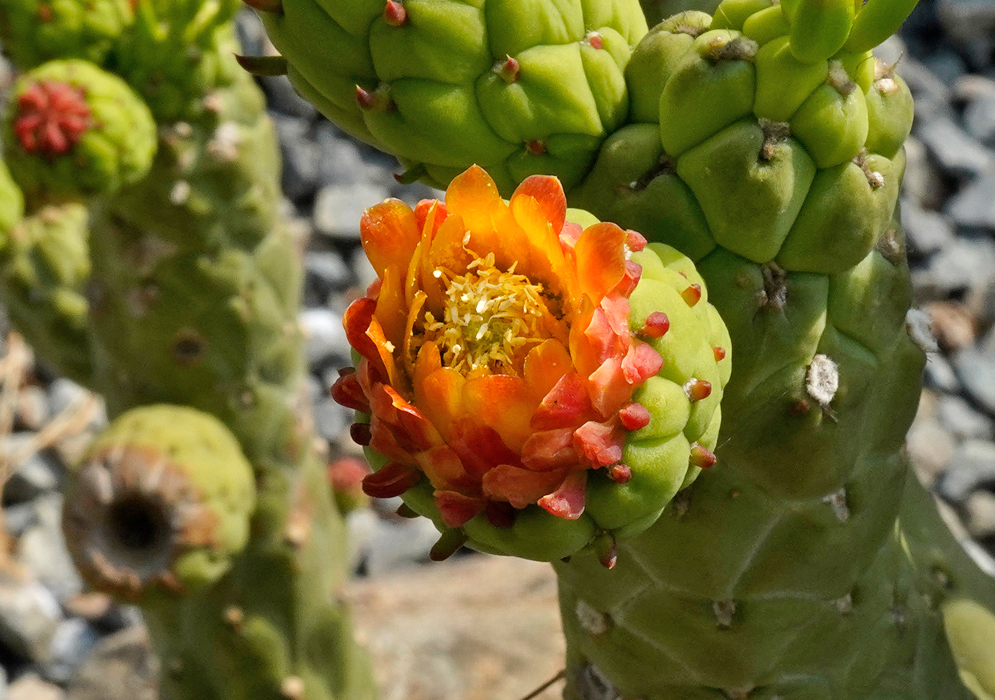This post has 11 Simple Fields-fields attached. Show fields.

Austrocylindropuntia subulata is a columnar cactus native to the high Andes of Peru and Ecuador, thriving at elevations of 6,600 to over 13,000 feet, where it endures intense sunlight, wide temperature fluctuations, and seasonal drought. Its thick, elongated stems are covered with prominent tubercles and long, sharp spines, and can reach heights of up to 13 feet. The plant produces showy, tubular flowers in shades of orange to reddish-orange. The species is known for its resilience in poor, rocky soils and is sometimes cultivated as a living fence in rural Andean communities due to its dense, spiny growth that deters livestock. The fruits are edible, containing small seeds within a fleshy pulp, and have been traditionally consumed in small quantities. Its robust growth and tolerance for harsh climates have also led to its introduction in other parts of the world, where it is sometimes used in xeriscaping or erosion control, though in certain regions it can become invasive. Photographed in Peru.

